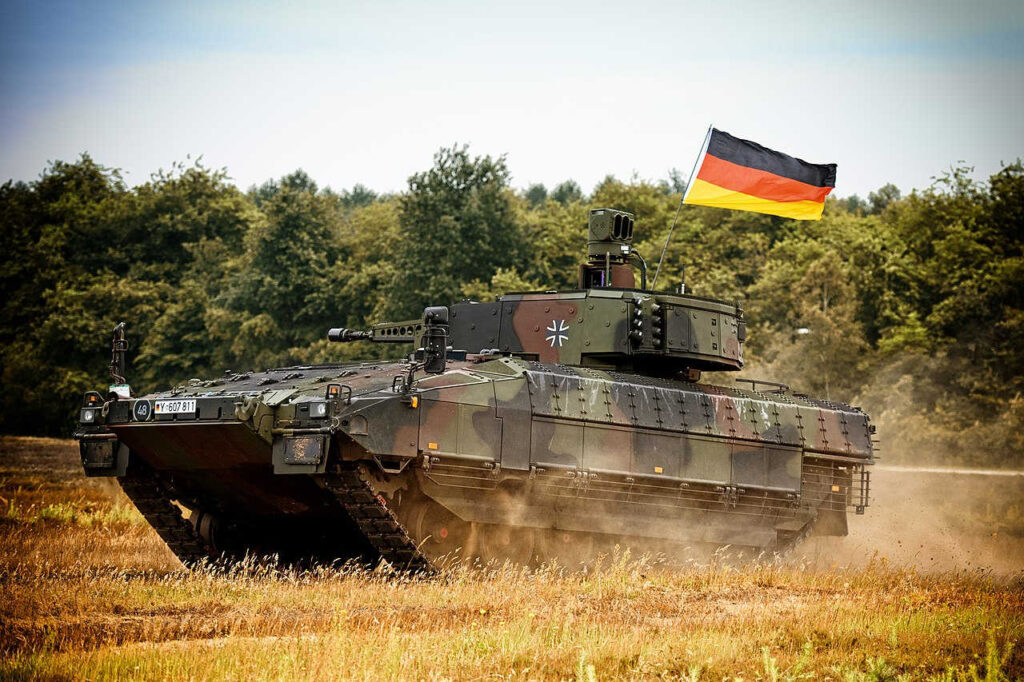Exercises involving the Puma armored carrier were reportedly “a total failure”.
Germany’s Puma armored infantry fighting vehicles, which had been expected to join the NATO rapid-response force, have completely failed during training exercises, Der Spiegel magazine reported on Saturday, citing a Bundeswehr internal document.
The publication cited a letter from Major General Ruprecht von Butler, commander of the 10th Armored Division, which said that all of the 18 vehicles that participated in the exercise had become inoperable. He described their performance as “a total failure.”
The electronics were said to have been prone to problems, while one vehicle experienced a fire in the driver’s compartment.
Von Butler reportedly wrote that the last two operational Pumas eventually broke down “after an hour and a half, with turret defects.”
The defects have “never occurred with such frequency,” the commanding general was quoted as saying. He added that the Puma’s performance “becomes a lottery, despite all necessary preparations,” which is “especially stressful for the troops.”
According to Der Spiegel, the Puma was expected to be deployed next year as part of NATO’s rapid-response force. However, von Butler was cited as saying that it would be unavailable for three to four months. It would be replaced by older Marder infantry fighting vehicles “until further notice,” he reportedly wrote, adding that authorities would do everything to restore the Puma’s combat readiness.
Due to its numerous problems, the Puma armored vehicle was previously dubbed ‘Pannenpanzer,’ or ‘breakdown tank,’ by German media.
The news follows multiple reports about shortages of weapons and ammunition in the Bundeswehr, as Berlin continues to send arms to Ukraine for that country’s conflict with Russia.
Der Spiegel had earlier reported that Germany does not have enough artillery and air-defense systems to contribute to NATO’s battalion-sized multinational unit, stationed in Lithuania.
Image credit: Dirk Vorderstraße, CC BY 2.0

In World War Two, the most reliable tank was the Russian T-35/85. It was simple in design, easy to maintain, built by the thousands, and survived most of the lesser firepower of most German Panzers, EXCEPT for the 88 millimeter guns that were added to the Panzer lV, the Tiger and King Tiger.
The Panzers were complicated, prone to break-downs, and many fought from their stationary locations due to breaking down!
Sergeant (Feldwebel) Kurt Knispel, the leading German Panzer Ace of all time, died after his damaged King Tiger could no longer move, with Kurt and his crew abandoning the ammunition-spent Panzer,. Kurt suffered a fatal head injury, and was only recently re-interred in a German Cemetery. His history is unique, as he was not politically correct, and stopped the SS from beating Russian Prisoners of War. He never received the Iron Cross, the Knights Cross, or proper recognition, due to his sense of ethical treatment of Prisoners of War under the Geneva Convention.
Kurt Knispel is credited with over 168 victories, more than massively-recognised Major Michael Wittman in his Tiger Tank…
The second most reliable tanks were the American Sherman (under-gunned, under-armoured, and powered by gasoline) and the British Centurian (developed for desert warfare).
The German Leopard lV has had a lot of the teething problems worked out from earlier versions.
The Russian Armada Tank is formidable, and can be operated as a full-access drone, without a crew if needed.
Insofar as Armoured Infantry Carriers, multi-wheeled vehicles with blast and projectile-resistant wide track tyres is the only option. One can keep going in a wheeled vehicle, which has the option of partial caterpillar tracking added on the rear wheels.
Tracked Armoured Infantry Carriers are a severe liability, as once you throw a track, the vehicle is frozen in place (see the movie ‘Fury’, and the Russian movie ‘Iron Fury’, plus the Russian Movie titled ‘White Tiger’), whereas a wheeled vehicle can still continue for a sizable distance even if several tyres are flat.
The key to this is portable ‘plug-in and take with you’ accessories adapted for vehicle use, less sophistication, armour-piercing rapid fire 40mm cannon arrangements in addition to the main gun of 105-120mm, and reactive armour.
BTW, T-34 / 85’s are still in use with several militaries around the world.
Interesting read.
This agrees very much with military experts analysis of Russian military hardware. Saying that they have some high end tech weapons but focus on larger volumes of low tech solutions that dont break down as easily in the field.
Their artillery being a case in point where they have systems that fire guided rounds but then simpler but robust artillery pieces that then concentrate large volumes of fire on that location.
Thanks Panzerleid, most informative. Yes agree on the Russian T35, well designed and built for the conditions. It was a stunning achievement under wartime pressure.
I was going to post a comment on the oversell of the German WW2 Panzers, they indeed had their limitations in combat, but agree also some remarkable wins, but you have said all that needs to be said on the matter… ✔️
As to today, the Russians are winning hands down with their balance of high and low tech. Smart move on the battle field. 2023 going to be an interesting year…
The panzer corps were well lead and had sound methodology,unfortunatly for them the gear let them down